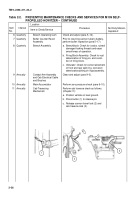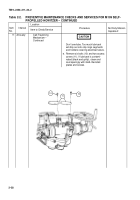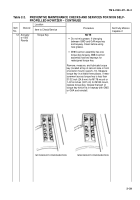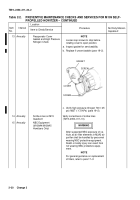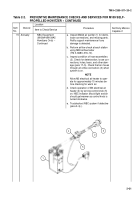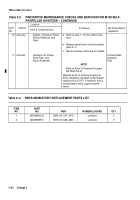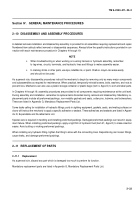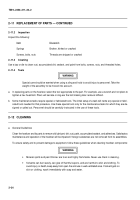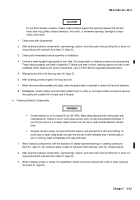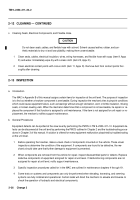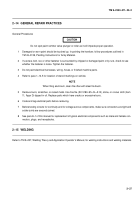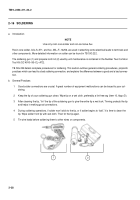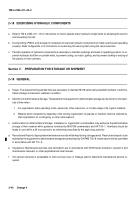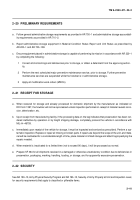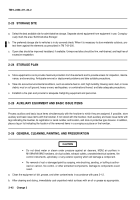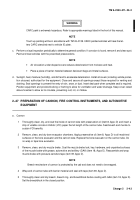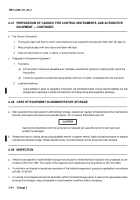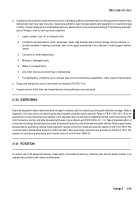TM-9-2350-311-20-2 - Page 97 of 828
TM 9–2350–311–20–2
2–36
Change 2
2–12 CLEANING — CONTINUED
c.
Cleaning Seals, Electrical Components, and Flexible Hose
CAUTION
Do not clean seals, cables, and flexible hose with solvent. Solvent causes leather, rubber, and syn-
thetic materials to dry rot and lose pliability, making them unserviceable.
1
Clean seals, cables, electrical insulation, wires, wiring harnesses, and flexible hose with soap (item 9, Appx
D) and water. Immediately wipe dry with a clean cloth (item 25, Appx D).
2
Clean electrical contact points with crocus cloth (item 11, Appx D). Remove dust from contact points thor-
oughly after cleaning.
2–13 INSPECTION
a.
Introduction
The MAC in Appendix B of this manual assigns certain items for inspection at the unit level. The purpose of inspection
is to find out whether a howitzer component is serviceable. During inspection the mechanic tries to pinpoint conditions
which could cause equipment failure, such as bearings without enough lubrication, worn or brittle insulation, missing
seals, or broken leveling vials. When the mechanic determines that a component is not serviceable, he repairs or re-
places the component if that function is assigned to unit maintenance. If the item is not assigned for unit repair or re-
placement, the mechanic notifies support maintenance.
b.
General Procedures
Equipment defects can be spotted at the crew level by performing the PMCS in TM 9–2350–311–10. Equipment de-
fects can be discovered at the unit level by performing the PMCS outlined in Chapter 2 and the troubleshooting proce-
dures in Chapter 3 of this manual. A solution is offered for every equipment malfunction pinpointed by troubleshooting
at the unit level.
1
Before operating the howitzer, make a visual check of components mounted on the vehicle. These visual
inspections determine the condition of the equipment. If components are found to be defective, the me-
chanic should take care that further damage to equipment is prevented.
2
When components are removed from the vehicle for repair, inspect disassembled parts for defects. Replace
defective components of equipment assigned for repair at unit level. If malfunctioning components are not
assigned for repair at unit level, notify support maintenance.
3
Specific inspection procedures called for in the MAC are outlined in maintenance chapters 4 through 19.
4
Some tests on systems and components can only be performed when elevating, traversing, and ramming
systems are fully installed and operational. Certain tasks will direct the mechanic to elevate and traverse to
check the operation of hydraulic and electrical components.
Back to Top

